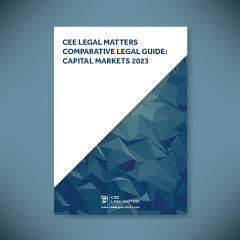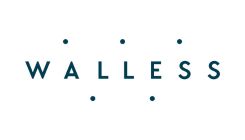Contributed by Walless.
1. Market Overview
Lithuanian ECM and DCM markets over the few last years were not very active and there are only a few transactions to mention.
ECM
Initial public offering (IPO) of IGNITIS GROUP, IPO value - EUR 22.1 million (2020).
DCM
- Debut EUR 75 million sustainability-linked bond issue by the energy transmission and exchange group EPSO-G (2022).
- Debut EUR 35 million green bond offering by a collective investment undertaking UAB „Atsinaujinancios energetikos investicijos” under its EUR 100 million program (2022).
- EUR 240 million bonds issued by UAB MAXIMA GRUPE under its EMTN program (2022).
- Debut EUR 300 million Eurobond offering by Akropolis Group (2021).
- EUR 300 million green bonds issued by IGNITIS GROUP under its updated EUR 1.5 billion Euro Medium Term Note Program (2020).
2. Overview of the local stock exchange and listing segments (markets)
2.1. Regulated market
Currently, there is only one stock exchange operator in Lithuania – AB NASDAQ Vilnius. It administers a regulated market and a non-regulated market.
The regulated market consists of (i) Main List and Secondary List for equity securities, (ii) the SPAC list (referred to as Special Purpose Acquisition Company. SPAC is an issuer with no commercial/business operations what is formed to raise capital through public offering with a purpose of acquiring one or more existing companies within a certain time period), (iii) the Bond List for debt securities, and (iv) the Fund List for securities issued by collective investment undertakings.
2.2. Non-regulated market
The non-regulated market consists of the alternative market First North, which qualifies as a multilateral trading facility.
3. Key Listing Requirements
3.1. ECM
In order to be listed on the NASDAQ Vilnius stock exchange, a company must meet certain general requirements: i) the company must be committed to complying with applicable sanctions laws and regulations, and its economic status must not prejudice the interests of the investors; ii) the shares to be listed must be free of any encumbrances, entitling their holders to equal rights and be fully paid up. Further requirements depend on the list and market that companies seek for listing. These requirements are listed below.
Issuer’s history of operations – three years for the Main List, two years for the Secondary List, not applicable for the First North market.
Minimum capitalization – EUR 4 million for the Main List, EUR 1 million for the Secondary List, not applicable for the First North market.
Free float – at least 25% for the Main List (or the value of free float must amount to EUR 10 million), not applicable for the Secondary List, not applicable for the First North market.
Prospectus – required for listing on the Main and Secondary lists, not applicable for the First North market.
Reporting – An annual report and semi-annual or quarterly financial reports for listing on the Main and Secondary lists, annual and semi-annual financial reports for the First North market. Listing on First North also requires the relevant issuer to enter into an agreement with a certified advisor of First North which shall advise and ensure that the issuer complies with reporting and other listing requirements.
Accounting – Financial reports to be prepared according to the International Financial Reporting Standards for listing on the Main and Secondary lists, financial accounting standards of choice for the First North market.
Language – Information disclosure in Lithuanian and English language for listing on the Main and Secondary lists, information disclosure in Lithuanian or English language for the First North market.
3.2. SPAC
The application for admission to the SPAC List must cover all the shares of the same category already issued.
The Nasdaq Vilnius may provide that the condition to cover all the shares of the same class already issued shall not apply to applications for admission where the shares of that class for which admission is not sought belong to issues serving to maintain control of the issuer or are not negotiable for a certain time under agreements, if the public is informed of such situations and if there is no danger of such situations prejudicing the interests of the holders of the shares for which admission to the SPAC List is sought only.
The rules regarding historical financial information and business operations shall not be applicable to a SPAC.
SPAC must disclose publicly information that ensures that the management of SPAC has an impeccable reputation and sufficient knowledge and experience to perform their duties properly.
At least 90% of the gross proceeds from the public offering and any other sale of the shares by the Issuer must be deposited in a bank account maintained by an EEA-licensed credit institution independent from the Issuer. The deposit amount may be invested in short-term securities of the Government of the Republic of Lithuania and other safe money market instruments. The remaining amount, which does not exceed 10% may be used for the economic and commercial activities of the issuer.
Unless disclosed in the prospectus, the issuer in accordance with the Law on Securities of the Republic of Lithuania shall disclose at least information set out in the ESMA Public Statement on SPACs: prospectus disclosure and investor protection considerations as of July 15, 2021.
3.3. DCM
Issuer’s history of operations – two years for the Bonds List, not applicable for the First North market.
The minimum denomination of bond issue – EUR 200,000 for the Bonds List, not applicable for the First North market.
Prospectus – required for listing on the Bonds List, not applicable for the First North market.
Reporting – Annual report and semi-annual or quarterly financial reports for listing on the Bonds List, Annual and semi-annual financial reports for the First North market.
Accounting – Financial reports to be prepared according to International Financial Reporting Standards for listing on the Bonds List, financial accounting standards of choice for the First North market.
Language – Information disclosure in Lithuanian and English for listing on the Bonds List, information disclosure in Lithuanian or English for the First North market.
GENERAL NOTE: The stock exchange may waive certain of the requirements, e.g., that of having certain operating history. The decision to waive requirements is based on considerations of the issuer’s financial status, its position in the market, the field of activity, reputation, prospects, and other factors.
4. Prospectus Disclosure
4.1. Regulatory regimes (Prospectus Regulation or similar) – equity and debt
Disclosure related to the issue of equity and debt securities as well as related to the listing of equity and debt is based on Regulation (EU) 2017/1129 of the European Parliament and of the Council of 14 June 2017 on the prospectus to be published when securities are offered to the public or admitted to trading on a regulated market as amended (the “Prospectus Regulation”).
4.2. Local market practice considerations
In accordance with limits permitted by the Prospectus Regulation, Lithuania does not require a prospectus to be prepared for the public offering of securities if the total consideration in the EU is less than EUR 8 million, calculated over a period of 12 months.
The public offering of securities in Lithuania when the total consideration calculated over a period of 12 months is between EUR 1 million and EUR 8 million is subject to the preparation and publication of the informational document. This document shall describe the issuer and securities to be offered. Requirements for the content of the such informational document are established by the securities market regulator, i.e., the Bank of Lithuania. Notably, there is no requirement to have this document approved by any authority.
A listing prospectus is required for listing on a Lithuanian-regulated market. However, should listing be sought on the First North market (i.e., the non-regulated market) informational document prepared in accordance with the rules of the First North would suffice. These rules to a large extent are similar to the requirements established by the Bank of Lithuania for the offering of securities when the total consideration calculated over a period of 12 months is between EUR 1 million and EUR 8 million. In practice, issuers of such securities prepare only one informational document containing the information as required by the regulator and by the First North and use it both for the offering and for the subsequent listing on the First North market.
4.3. Language of the prospectus for local and international offerings
Where an offer of securities to the public is made or admission to trading on the regulated market is sought only in Lithuania, the prospectus shall be drawn up in the Lithuanian language. However, it is also permitted to request the regulator to accept the prospectus prepared in the English language.
As far as international offerings are concerned, the prospectus may be prepared in Lithuanian or English at the choice of the issuer.
5. Prospectus Approval Process
5.1. Competent authority/regulator
As discussed above, the competent authority for the review and approval of prospectuses prepared in accordance with the Prospectus Regulation is the Bank of Lithuania.
5.2. Timeline, review, and approval process
The process and timeline for the approval of the prospectus by the Bank of Lithuania are based on the Prospectus Regulation. These requirements do not specify the maximum number of drafts allowed to be submitted. As such, the regulator may request to provide amended drafts as long as it finds that the previous drafts do not meet the standards of completeness, comprehensibility, and consistency necessary for its approval and/or that changes or supplementary information are needed.
6. Listing Process
6.1. Timeline, process with the stock exchange
The process with the stock exchange is fairly simple. Apart from the relevant corporate resolutions it requires a formal application of the issuer to AB NASDAQ Vilnius. Usually, assessment by the stock exchange takes 2-4 weeks (although the official term is three months), upon which the listing agreement is signed and listing commences.
When the listing is being sought by a company that is undergoing an IPO, the process with the stock exchange usually is conducted as part of the preparations for an IPO in order to ensure that the listing occurs immediately after the completion of the IPO. In such cases, the stock exchange makes its assessment prior to the completion of the transactions and facilitates the listing to commence as required by the issuer and IPO team.
7. Corporate Governance
7.1. Corporate governance code/rules (independent director, board and supervisory composition, committees)
Companies listed on the regulated market of AB NASDAQ Vilnius are subject to the Corporate Governance Code (Code) of the NASDAQ Vilnius stock exchange. This Code lays down the principles and standards of corporate governance. It is not strictly mandatory, but the companies that do not comply with the provisions of the Code must describe and explain such non-compliance within the Corporate Governance Report that is part of the annual reporting.
The Code is drafted on a basis of analogous codes, standards, and principles of other states and international organizations, the key ideas and directions of which are reflected in the Principles of Corporate Governance of the Organization for Economic Cooperation and Development.
The model of corporate governance required by the Code is in accordance with Lithuanian legal requirements for the corporate governance structure. Accordingly, companies must have a manager (CEO) of the company and either a one-tier management board or a two-tier board (management and supervisory boards). Certain matters are decided by the general meeting of shareholders. Where a supervisory board is not formed, the management board should also perform the supervisory functions.
Until recently one of the principles of the Code was a requirement that companies have an independent member on the supervisory or management board. Recently a similar requirement was introduced into the Lithuanian Law on Companies. According to the law, 1/3 of the members of the supervisory board (or 1/3 of the management board that performs supervisory functions) of listed companies must be independent. The criteria for independence are also provided in the law.
As far as committees are concerned, under the Code, companies listed on the regulated market should form at least nomination, remuneration, and audit committees.
Committees should exercise independent judgment and integrity when performing their functions and provide the collegial body with recommendations concerning the decisions of the collegial body. Committees should normally be composed of at least three members, although subject to the requirements of the legal acts, committees may be comprised only of two members as well. Members of each committee should be selected on the basis of their competencies by giving priority to independent members of the collegial body. The chair of the management board should not serve as the chair of committees.
7.2. Any other ESG considerations
There are no formal requirements related to ESG except for the requirement that large listed companies with an average number of employees exceeding 500 prepare a Social Responsibility Report as part of the annual reporting. This report shall cover matters related to the protection of the environment, social and staff issues, protection of human rights, and prevention of corruption and bribery.
There are no new regulations and requirements related to ESG for the year 2023, however on December 14, 2022 a directive regarding corporate sustainability reporting came into effect, whose rules shall apply for financial years starting on or after January 1, 2024 (applicable to issuers exceeding on their balance sheet dates the average number of 500 employees during the financial year).
8. Ongoing Reporting Obligations (Life as a Public Company)
8.1. Annual and interim financials
As discussed above, issuers listed on the regulated market must prepare and publish annual and semi-annual (or quarterly financial) reports prepared according to the International Financial Reporting Standards (this requirement does not apply to certain issuers, e.g., issuers of debt securities with denominations of not less than EUR 100,000).
8.2. Ad hoc disclosures
In addition to the above, issuers are obliged to make public disclosures in accordance with requirements of Regulation (EU) No 596/2014 on market abuse which, amongst other items, regulates public disclosure of inside information and disclosure of manager’s transactions.
Besides that, the issuers must disclose information about any person who has acquired 5%, 10%, 15%, 20%, 25%, 30%, 50%, 75%, or 95% of the voting rights in that issuer. This obligation also applies where the specified limits are exceeded in descending or ascending order. A similar obligation also applies with respect to persons holding other types of financial instruments (e.g., options, swaps, etc.) that under the terms of those instruments give rise to the acquisition of voting rights.
The issuers also must disclose acquisitions and transfers of their own shares (votes), changes to the rights attached to the financial instruments issued by the issuer, and changes to its constitutive documents (e.g., Articles of Association). Special rules and disclosure regimes also apply in relation to takeover, sell-out, and squeeze-out events. These requirements are generally in line with rules established by Directive 2004/25/EC on takeover bids.





